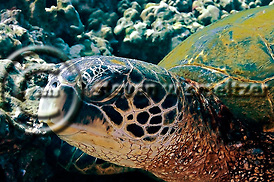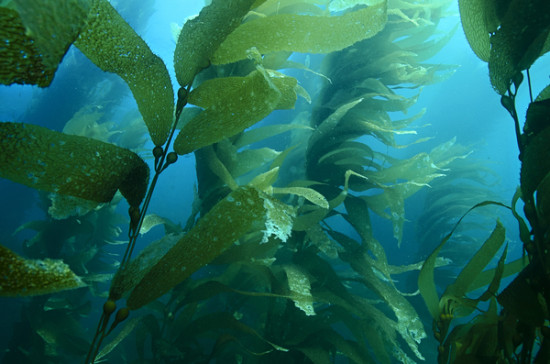Scuba Diving Molokai can be awesome, especially at Mokuhooniki Rock. In fact, the reef is one of the most interesting that I have dove on anywhere on the planet. Specifically, the variety of marine species, the isolation and relatively untouched environment make this a one of a kind location. But,……we all come for the Hammerheads.
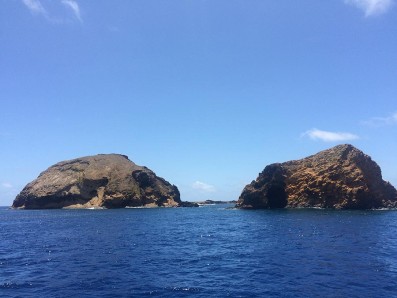
Mokuhooniki Rock or islet is located at 21 07′ 40″N, 156 42’20″W just off the North eastern coast of Molokai. Also known as Fish Rain, this site is one of my top ten scuba diving sites in the world.
Specifically, interacting with such a variety of marine life combined with large pelagic species makes this place special. In fact, when scuba diving Molokai Mokuhooniki Rock, you encounter Hammerhead sharks on almost every dive. Moreover, you will also see a rich and diverse ecosystem. To illustrate, large schools of Damsels, Butterflyfishes, along with Dolphins and Tiger Sharks inhabit these waters. As a matter of fact, you will be hard pressed to find other more diverse dive sites.
As I stated before, the abundance and variety of marine life in such a pristine condition are exceptional. If you are on Maui and you are an advanced diver, you simply must do this dive.
Scuba Diving Molokai – The Adventure
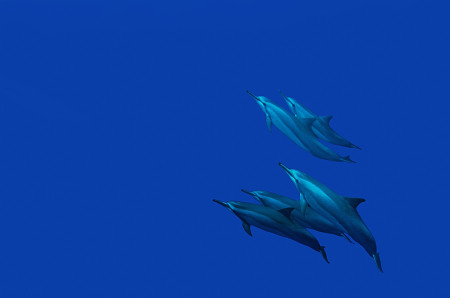
Scuba Diving Molkai can be adventure diving at its peak. First of all, it takes about 45 minutes to an hour to go from the harbor in Lahaina to Mokuhooniiki Rock. Secondly, crossing the Pailolo (means crazy fishermen) channel alone can bring seasoned divers to their knees. It can be quite rough. This is not a beginners dive site. In fact, even if you are an advanced rated diver it can be challenging.
Thirdly, you should be extremely comfortable exiting a moving boat and reentering a moving boat in potentially rough and choppy seas. While, I have been on this site dozens of times and it can be like glass, it is extremely rare. The site can also have 6+ foot waves. I have seen divers break ribs on their reentering the boat. While others become extremely agitated and near panic on the pick up.
I remember one dive in particular where the waves, even in the lee of the rock, were running about 8 to 10 feet. While the boat came around to pick us up I was literally on the top of one wave. I was literally looking down at the captain of the boat. Who by the way, was on the top deck of a double deck dive boat. In fact, the boat was some 5 feet or so below me in the trough of a wave. With this in mind, I thought this is going to be a very interesting pickup.
But……what a great scuba diving site.
The Dive
When scuba diving Molokai, you enter the dive site typically in the lee of the islet on the right above. The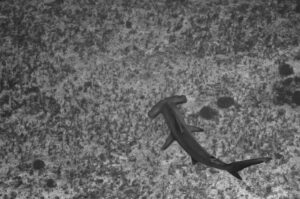
If you have not entered a dive site from a moving boat before this will a bit of an adventure for you. Think of it as channeling your inner Navy Seal. When you are lined up at the back of the boat, the captain will swing the boat around. When the boat points toward the islet and all divers are ready, the crew will say Divers Ready.
Dive, Dive, Dive
They will then begin counting down two minutes, one minute, etc. When the Captain gives his ok the crew will give you a signal “Dive, Dive, Dive”. Do NOT enter the water before the crew has given you the OK, and said “Dive, Dive, Dive”. At this point, divers will quickly enter the water one after the other while the boat is moving.
Typically up to 8 divers may enter in 15 to 20 seconds. You will then meet you dive guide on the surface and all begin your descent together. You are usually on the surface no more than 30 seconds before beginning your descent.
And what a wonderful descent. The islet will be on one side and you will see a gradual slope towards the bottom beneath you. The
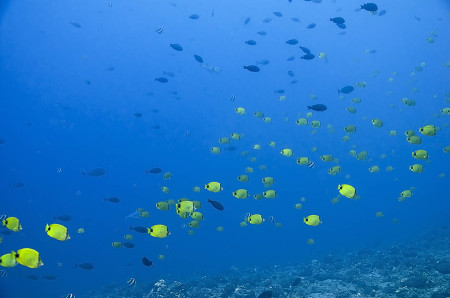
depth is about 100 to 110 feet in the channel but only about 50 to 60 where you will be dropped off. When scuba diving Molokai, visibility is usually very good allowing you to see 100 to 150+ feet in the distance. And at Mokuhooniiki Rock there are fish everywhere.
The dive itself is basically a half-circle around Mokuhooniiki Rock and the boat will pick you up on the other side. Dive time is usually about 50 minutes give or take depending on depth of the dive and your air consumption. If you dive Nitrox, this is a great spot to use it as you can get a little more time at depth when looking for the Hammerheads. I usually hang out to the left of the group as I don’t want to have a lot of other divers close to me when I am trying to get a shot.
Getting the Shot
The Hammerheads sharks are a bit skittish. If you or someone in your group swims rapidly towards them, they will simply move away. While scuba diving Molokai, the key is to go slow and easy and be patient. As you start your descent from the boat you will follow the slope down to around 50 feet and then do one of two things. Either start swimming out into the blue and looking for the sharks, which we do many times on the first dive, or you will begin to swim around the islet.
There can be a bit of current here but usually it is not too bad. Or if there is a ripping current it is usually going the direction of the dive once you pass the corner of the islet and it simply becomes a drift dive. When Scuba Diving Molokai, you can see anything from dolphin, to Tiger Sharks (not often), to Greys, to Hammerheads, to a Monk seal. You may also encounter a variety of rays and there have even been a few rare Humpback Whale sightings while on the dive (December to April). The abundance of various fishes and eels will blow you away. There are also many endemic species on this site so be attentive and take your time.
Getting Back on the Boat
When you surface you will stay with your dive group until the boat comes to get you. You will need a safety sausage to go on this dive and at least one of you will inflate the sausage at the end of the dive to signal the boat. If it is rough it is very important to stay as close together as possible while you are waiting to be picked up. Their could be one or max two other groups in the water, so you may have to wait several minutes to be picked up. Again be patient.
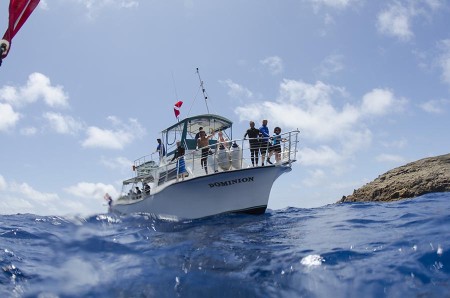
The boat will come very close to you and throw a line out to the divers. You have to swim to the line and grab a hold and then begin to slowly move up the line towards the boat. You will take off your fins while you are holding on the line and have those in one hand to give to one of the crew as they help you aboard.
If you have a camera as I do, then you will give them your camera first to the crew and then take off your fins. Then you will proceed towards the boat and use a ladder to board. Scuba diving Molokai can be quite intimidating if you have never done something like this. However, the crew is exceptionally good at what they do. Listen to them and do as they say and you will be fine. Believe me this dive will be worth it.
Rinse and Repeat
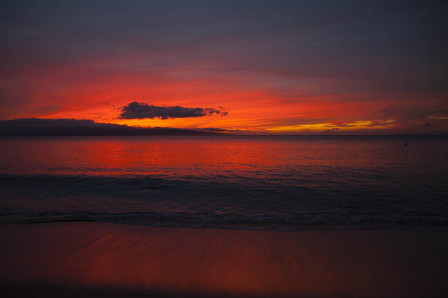
After you finish your first dive and complete your surface interval, you will basically repeat the same dive on your second dive. But there is enough scuba diving Molokai to interest you no matter how many times you dive it.
After scuba diving Molokai you get to relax on the boat ride back to Lahaina and enjoy the other adventures that Maui has to offer.
Long may the Fish Rain…..the pool is open

